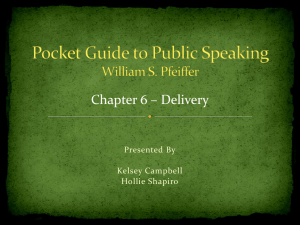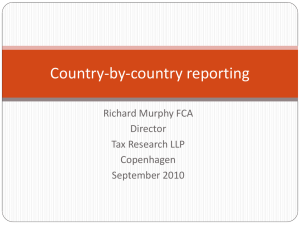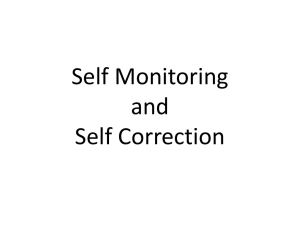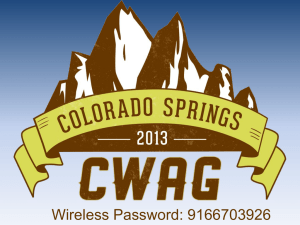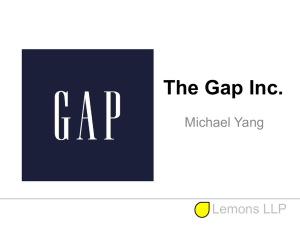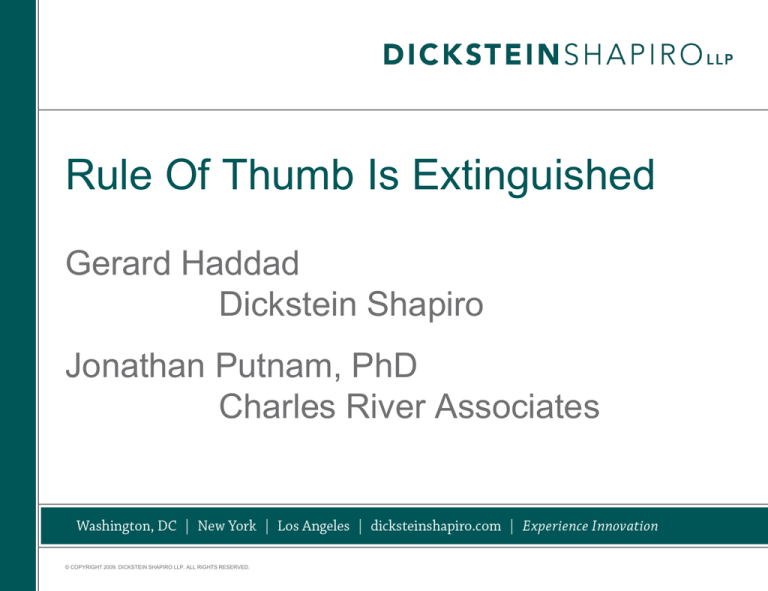
Rule Of Thumb Is Extinguished
Gerard Haddad
Dickstein Shapiro
Jonathan Putnam, PhD
Charles River Associates
© COPYRIGHT 2009. DICKSTEIN SHAPIRO LLP. ALL RIGHTS RESERVED.
Uniloc v. Microsoft
• “This court now holds as a matter of Federal
Circuit law that the 25 percent rule of thumb is a
fundamentally flawed tool for determining a
baseline royalty rate in a hypothetical
negotiation.”
• 632 F.3d 1292, 1315 (Fed. Cir. 2011)
2
© COPYRIGHT 2009. DICKSTEIN SHAPIRO LLP. ALL RIGHTS RESERVED.
3
© COPYRIGHT 2009. DICKSTEIN SHAPIRO LLP. ALL RIGHTS RESERVED.
Rule of Thumb
• The history of the rule
• How was it applied by Uniloc’s expert?
• How is the rule flawed?
• What should the experts look to generally?
• Did the Entire Market Value rule change?
• Real-life examples of proper damages analyses.
4
© COPYRIGHT 2009. DICKSTEIN SHAPIRO LLP. ALL RIGHTS RESERVED.
35 U.S.C. 284
• “Upon finding for the claimant the court shall
award the claimant damages adequate to
compensate for the infringement but in no event
less than a reasonable royalty for the use made
of the invention by the infringer….”
• The reasonable royalty is determined on the
basis of a “hypothetical negotiation” at the time
infringement began
– When the patent issues
– When the accused product began shipping
5
© COPYRIGHT 2009. DICKSTEIN SHAPIRO LLP. ALL RIGHTS RESERVED.
What is the 25% Rule?
• The rule suggests that a licensee pay a royalty
rate of 25% of its expected profits for the
product that incorporates the IP at issue.
• The rule leaves the licensee with 75 % of the
profits to account for its development costs,
commercial risks, its own contributions, etc.
• Had often been used as a starting point in
damages analyses in patent cases, and then
adjusted up or down based on other factors.
6
© COPYRIGHT 2009. DICKSTEIN SHAPIRO LLP. ALL RIGHTS RESERVED.
Where did the 25% Rule come from?
• Often credited to Robert Goldscheider, who
wrote an article tracing the rule back to as early
as 1938.
• Goldscheider did a study on a series of licenses
from the 1950s that averaged 25% of licensee’s
profits
• Link to Goldscheider’s recent article:
http://www.bu.edu/otd/files/2009/11/goldscheider-25-percent-rule.pdf
7
© COPYRIGHT 2009. DICKSTEIN SHAPIRO LLP. ALL RIGHTS RESERVED.
More support for the rule
• A 1997 study of licensing organizations
indicated use of the 25 % rule as a starting point
in negotiations.
8
© COPYRIGHT 2009. DICKSTEIN SHAPIRO LLP. ALL RIGHTS RESERVED.
Uniloc Background
• Patent directed to a system for registering or
activating software on a CD using a code to
unlock/activate it to prevent a CD with the
software on it from being re-installed on another
computer.
• Accused product was Microsoft’s product
activation key for Microsoft Word and Microsoft
Windows XP
9
© COPYRIGHT 2009. DICKSTEIN SHAPIRO LLP. ALL RIGHTS RESERVED.
Uniloc’s expert’s methodology
• Relied on Microsoft internal document that stated the
product activation key was worth anywhere between $10
and $10,000 depending on the usage.
• Chose the lowest end of that range ($10) as the value of
the product activation feature
• Applied the 25% Rule, which he said meant that 25% of
the value of the product goes to patent owner, and 75%
of the value stays with Microsoft.
• The rate he set was $2.50 per license
• Note that this was not 25% of the profits, but 25% of the
“value” of the technology to Microsoft.
10
© COPYRIGHT 2009. DICKSTEIN SHAPIRO LLP. ALL RIGHTS RESERVED.
Uniloc’s expert’s methodology
• He then looked at a set of factors known as the
Georgia Pacific factors to determine whether the
$2.50 should be adjusted up or down
• He concluded that $2.50 was about right
• Multiplied $2.50 by about 226 million licenses
sold by Microsoft to come to $565 million in
damages
11
© COPYRIGHT 2009. DICKSTEIN SHAPIRO LLP. ALL RIGHTS RESERVED.
Uniloc’s expert’s check against his
calculation
• Expert used the Entire Market Value rule as a
check to determine whether his other calculation
was reasonable.
– First estimated the total revenue of all the accused
products based on an average selling price of $85
per unit, which came to about $20 billion
– Then divided his damages figure of $565 million by
$20 billion which he said resulted in a 2.9% royalty
rate.
– Because 2.9% was well below the “industry royalty
rate” for software of 10%, it was reasonable.
12
© COPYRIGHT 2009. DICKSTEIN SHAPIRO LLP. ALL RIGHTS RESERVED.
Microsoft’s objections to the 25% rule at
trial
• Microsoft filed a motion in limine to exclude the
expert’s testimony because it was based on the
25% rule.
• District court denied Microsoft’s motion because
the 25% rule had been widely accepted.
13
© COPYRIGHT 2009. DICKSTEIN SHAPIRO LLP. ALL RIGHTS RESERVED.
Microsoft’s objections to use of the entire
market value rule
• Microsoft objected to Uniloc’s expert using the
Entire Market Value rule as a check, arguing:
– Product Activation was not the “basis of consumer
demand” for Microsoft Office or Windows
• District Court agreed with Microsoft and granted
a new trial on damages because the “$19 billion
cat was never put back into the bag” and the
jury may have “used the $19 billion figure to
check its significant award of $388 million.”
14
© COPYRIGHT 2009. DICKSTEIN SHAPIRO LLP. ALL RIGHTS RESERVED.
Fed Cir Uniloc decision criticizes the rule
of thumb
• Does not consider the relationship between the
patent and the accused product
– Importance of the patent to the profits?
– Availability of close substitutes (noninfringing
alternatives)?
• Does not look at the patent
– 25% may be overly generous to narrow patents
– 25% may be too stingy for broad patents
15
© COPYRIGHT 2009. DICKSTEIN SHAPIRO LLP. ALL RIGHTS RESERVED.
Fed Cir Uniloc decision criticizes the rule
• Does not consider the relationship between the
parties
– e.g., Are they competitors?
• The rule is essentially arbitrary
– Does not relate to a hypothetical negotiation that took
place just prior to when infringement began
16
© COPYRIGHT 2009. DICKSTEIN SHAPIRO LLP. ALL RIGHTS RESERVED.
Fed Cir Uniloc decision criticizes the rule
• Relying on the 25% rule is even more unreliable
than relying on unrelated licenses (which was
rejected by ResQNet)
• Cannot just use 25% as a starting point because
you then begin with a “fundamentally flawed
premise”
– Adjusting up or down based on legitimate grounds
results in a flawed conclusion.
17
© COPYRIGHT 2009. DICKSTEIN SHAPIRO LLP. ALL RIGHTS RESERVED.
Daubert v. Merrell Dow Pharmaceuticals,
509 U.S. 579 (1993)
• Uniloc cited Daubert and Rule 702, Fed. R.
Evid.
– Requires “judge to determine that the testimony was
based on firm scientific or technical grounding”
18
© COPYRIGHT 2009. DICKSTEIN SHAPIRO LLP. ALL RIGHTS RESERVED.
Uniloc holding:
• “This court now holds as a matter of Federal
Circuit law that the 25 percent rule of thumb is a
fundamentally flawed tool for determining a
baseline royalty rate in a hypothetical
negotiation. Evidence relying on the 25 per-cent
rule of thumb is thus inadmissible under Daubert
and the Federal Rules of Evidence, because it
fails to tie a reasonable royalty base to the facts
of the case at issue.”
19
© COPYRIGHT 2009. DICKSTEIN SHAPIRO LLP. ALL RIGHTS RESERVED.
Requirements of expert testimony under
Uniloc
• Patentee must sufficiently tie the expert
testimony to the facts of the case or else it is
excluded.
• Evidence unrelated to the claimed invention
does not support compensation for infringement
but punishes beyond the reach of the statute.
20
© COPYRIGHT 2009. DICKSTEIN SHAPIRO LLP. ALL RIGHTS RESERVED.
What evidence is tied to the patent?
• Licenses
– Patentee cannot rely on license agreements that are
radically different from the hypothetical agreement
under consideration. Lucent Techs v. Microsoft, 580
F.3d 1301 (Fed. Cir. 2009)
– Licenses without a relationship to the claimed
invention cannot form the basis of a reasonable
royalty calculation. ResQNet v. Lansa, 594 F.3d 860
(Fed. Cir. 2010).
21
© COPYRIGHT 2009. DICKSTEIN SHAPIRO LLP. ALL RIGHTS RESERVED.
What evidence is tied to the patent?
• Licenses
– Must be sufficiently comparable to the hypothetical
license at issue in suit. Lucent Techs.
– Must be commensurate with what the defendant has
appropriated. ResQNet
– Must have an economic or other link to the
technology in question. ResQNet
– Must be linked to the economic demand for the
claimed technology. ResQNet
22
© COPYRIGHT 2009. DICKSTEIN SHAPIRO LLP. ALL RIGHTS RESERVED.
Uniloc requires a tie to the patent
• “there must be a basis in fact to associate the
royalty rates used in prior licenses to the
particular hypothetical negotiation at issue in the
case.”
• “The 25 percent rule of thumb as an abstract
and largely theoretical construct fails to satisfy
this fundamental requirement.”
– Not tied any particular technology
– Not tied any particular industry
– Not tied any particular party
23
© COPYRIGHT 2009. DICKSTEIN SHAPIRO LLP. ALL RIGHTS RESERVED.
Does Uniloc leave the door open to use
the 25% Rule?
• Federal Circuit criticized expert for relying on
25% Rule because it was unrelated to the facts
of the case
– Fed Cir noted that expert testified “it’s generally
accepted” and “I’ve used it. I’ve seen others use it”
– Expert did not testify that the parties had a practice of
beginning negotiations at a 25% / 75% split
– Expert did not base his use of 25% on other licenses
involving the patent or comparable licenses
24
© COPYRIGHT 2009. DICKSTEIN SHAPIRO LLP. ALL RIGHTS RESERVED.
Uniloc on the Entire Market Value
• Expert used Entire Market Value Rule as a
check
• EMV “allows a patentee to assess damages
based on the entire market value of the accused
product only where the patented feature creates
– the ‘basis for customer demand’ or
– ‘substantially create[s] the value of the component
parts.’”
25
© COPYRIGHT 2009. DICKSTEIN SHAPIRO LLP. ALL RIGHTS RESERVED.
Uniloc on the Entire Market Value
• Expert used Entire Market Value
– Showed that his damages figure was only 2.9 % of
total revenues of the accused product
– Put up a pie chart showing what Microsoft gets to
keep.
– Showed that Microsoft’s damages expert’s royalty
figure was only 0.0003% of the total revenue, and
that Microsoft got to “keep 99.9999% of the box”.
• Fed Cir said this “derision” of Microsoft’s expert may have
“inappropriately contributed to the jury’s rejection of his
calcluations.”
26
© COPYRIGHT 2009. DICKSTEIN SHAPIRO LLP. ALL RIGHTS RESERVED.
Uniloc on the Entire Market Value
• Microsoft argued using EMV was not proper
because product activation (the patented
feature) “did not create the basis for customer
demand or substantially create the value of the
component parts.”
• Uniloc argued that:
– EMV of the product can be used if the royalty rate is
low enough, and
– $19 billion was only used as a check, not as the basis
of damages.
27
© COPYRIGHT 2009. DICKSTEIN SHAPIRO LLP. ALL RIGHTS RESERVED.
Uniloc on the Entire Market Value
• Can you rely on EMV if the royalty rate is low
enough?
– Uniloc district court relied on this statement from the
Lucent Techs. case: “the base used in a running
royalty calculation can always be the value of the
entire commercial embodiment, as long as the
magnitude of the rate is within an acceptable range
(as determined by the evidence).”
– Fed Cir said No! this was taken out of context.
• Cannot consider EMV for minor patent improvements simply
by using a low enough royalty rate.
28
© COPYRIGHT 2009. DICKSTEIN SHAPIRO LLP. ALL RIGHTS RESERVED.
Uniloc on the Entire Market Value
• Fed Cir agreed with the district court that “the $19 Billion
cat was never put back into the bag”
• Putting $19 Billion in revenue “cannot help but skew the
damages horizon for the jury.”
• “This is in clear derogation of the entire market value
rule, because the entire market value of the accused
products has not been shown to be derived from the
patented contribution.”
• The fact that EMV was only a check “is of no moment”
29
© COPYRIGHT 2009. DICKSTEIN SHAPIRO LLP. ALL RIGHTS RESERVED.
Uniloc on the Entire Market Value
• Uniloc cited 1884 Supreme Court case that
required that the “the entire value of the whole
machine, as a marketable article, is properly and
legally attributable to the patented feature.”
Garretson v. Clark, 111 U.S. 120, 121.
30
© COPYRIGHT 2009. DICKSTEIN SHAPIRO LLP. ALL RIGHTS RESERVED.
What licenses are tied to the patent?
• ResQNet v Lansa, 594 F.3d 860 (Fed. Cir.
2010)
– “the trial court must carefully tie proof of the damages
to the claimed invention’s footprint in the
marketplace”
– “any evidence unrelated to the claimed invention
does not support compensation for infringement but
punishes beyond the reach of the statute.”
31
© COPYRIGHT 2009. DICKSTEIN SHAPIRO LLP. ALL RIGHTS RESERVED.
ResQNet v Lansa
• 7 licenses considered by the plaintiff’s expert
– 5 for software and services “rebundling agreements”
• Rates between 25% and 40%
– 2 straight licenses arising out of litigation of the
patents in suit.
• One was lump-sum
• Other was a running royalty likely around 5%
• Expert concluded 12.5% was reasonable
32
© COPYRIGHT 2009. DICKSTEIN SHAPIRO LLP. ALL RIGHTS RESERVED.
ResQNet v Lansa
• Fed Cir said the Court made no effort to link the
5 bundling licenses to the infringed patent
– None of these 5 licenses mentioned the patents in
suit
– No evidence that the software and services embodied
the patents in suit (other than conclusory statements
by the damages expert).
• Defendant used no damages expert
– Fed Cir said it was Plaintiff’s burden to offer sufficient
evidence regarding an appropriate royalty
33
© COPYRIGHT 2009. DICKSTEIN SHAPIRO LLP. ALL RIGHTS RESERVED.
ResQNet v Lansa
• The two straight patent licenses were the most
reliable ones
– Fed Cir recognized that litigation can “skew the
results of the hypothetical negotiation” because of the
threat of high litigation costs.
– Fed Cir also recognized that widespread infringement
can artificially depress past licenses
• Reasonable royalty based on the re-bundling
licenses “violates the statutory requirement that
damages be ‘adequate to compensate for the
infringement.’”
34
© COPYRIGHT 2009. DICKSTEIN SHAPIRO LLP. ALL RIGHTS RESERVED.
ResQNet v Lansa
• Lengthy Judge Newman Dissent
– Damages expert said that the software was based on
the technology described in the patents
– Evidence was unrebutted (defendant had no expert)
– Expert testified to GP factor #12: customary profit for
use of the invention or analogous inventions
• Expert discussed “oft-utilized 25% rule”
• Explained the 12.5 % royalty rate was within this rule
35
© COPYRIGHT 2009. DICKSTEIN SHAPIRO LLP. ALL RIGHTS RESERVED.
ResQNet v Lansa
• Take-away:
– Tie software / services agreements to patents
• liability expert can testify how the software sold embodies the
patents in suit.
– Can use litigation settlements
– Don’t cite the 25% rule
36
© COPYRIGHT 2009. DICKSTEIN SHAPIRO LLP. ALL RIGHTS RESERVED.
How have district courts interpreted
Uniloc and ResQNet?
• VS Technologies v Twitter, 2011 US Dist LEXIS
114975 (ED Va October 5, 2011)
– Method and system for creating an interactive virtual
community of famous people, or those who wish to
attain the status of a famous person
– Plaintiff’s expert relied on Twitter documents that
measured new users’ use of Twitter during the first
week following their use of the allegedly infringing
feature, which showed 5% to 7% of those users
increasing their use of Twitter that week
– Expert then apportioned incremental revenue of $73
to $102 million based on that incremental use.
37
© COPYRIGHT 2009. DICKSTEIN SHAPIRO LLP. ALL RIGHTS RESERVED.
How have district courts interpreted
Uniloc and ResQNet?
• VS Technologies v Twitter, 2011 US Dist LEXIS
114975 (ED Va October 5, 2011)
– Expert then opined that VS Tech “would be entitled to
somewhere between 15% and 40% of those
calculations” based on his 40 years of experience
– The district court allowed this testimony,
distinguishing Uniloc because it was based on an
arbitrary general rule.
– District court said that here, unlike Uniloc, the
expert’s “opinion is rendered on the basis of his
experience.”
– Is this royalty is “tied to the patent” ?
38
© COPYRIGHT 2009. DICKSTEIN SHAPIRO LLP. ALL RIGHTS RESERVED.
How have district courts interpreted
Uniloc and ResQNet?
• Inventio v. Otis Elevator, 2011 U.S. Dist. LEXIS 88965
(SDNY June 22, 2011)
– Plaintiff’s expert relied on entire market value rule.
– District Court acknowledged Uniloc’s warning against admitting
this theory when the patented feature did not create the basis for
customer demand
– “It is not enough to present evidence that the patented feature
was desirable, or that it played some role – even a substantial
role – in the customer’s decision to purchase….”
– Court noted no evidence of customer surveys or interviews
showing why customers selected the accused product
– Court precluded evidence of entire market value.
39
© COPYRIGHT 2009. DICKSTEIN SHAPIRO LLP. ALL RIGHTS RESERVED.
How have district courts interpreted
Uniloc and ResQNet?
• Mondis Technology v LG Electronics et al., 2011
U.S. Dist. LEXIS 78482 (ED Tx June 14, 2011)
– Patented feature did not create the basis for customer
demand
– Defendant’s expert relied on licenses that were based
on a percentage of the total accused product sales.
– The district court recognized Uniloc, but stated
disagreed with the defendant that Entire Market
Value Rule required the patented feature to be the
basis of the customer demand where “the most
reliable licenses [for the patented technology] are
based on the entire value of the licensed products.”
40
© COPYRIGHT 2009. DICKSTEIN SHAPIRO LLP. ALL RIGHTS RESERVED.
New Patent Act – Virtual Marking
• § 287(a) amended so that a product can be
marked by affixing the word “patent” “together
with an address of a posting on the Internet,
accessible to the public without charge for
accessing the address, that associates the
patented article with the number of the
patent….”
• Applies to any case pending or commenced on
or after the date of the Act.
41
© COPYRIGHT 2009. DICKSTEIN SHAPIRO LLP. ALL RIGHTS RESERVED.
New Patent Act – False Marking
• § 292 amended with “Only the United States
may sue for the penalty authorized by this
subsection.”
• “The marking of a product … with matter relating
to a patent that covered that product but has
expired is not a violation of this section.”
• Applies to “all cases, without exception” pending
or commenced on or after the date of the Act
– Should effectively shut down all the pending cases
42
© COPYRIGHT 2009. DICKSTEIN SHAPIRO LLP. ALL RIGHTS RESERVED.
New Patent Act – False Marking
• § 292 amended to carve out a new cause of
action for competitors:
“A person who has suffered competitive injury
as a result of a violation of this section may file a
civil action in a district court of the United States
for recovery of damages adequate to
compensate for the injury.”
43
© COPYRIGHT 2009. DICKSTEIN SHAPIRO LLP. ALL RIGHTS RESERVED.
New Patent Act – False Marking
• So, must show
(1) you’re a competitor
(2) a falsely marked product (but not just an
expired patent)
(3) you were damaged by the false marking
• You get actual damages – not the statutory
amount.
44
© COPYRIGHT 2009. DICKSTEIN SHAPIRO LLP. ALL RIGHTS RESERVED.
Apportionment and the EMVR
Post-Uniloc
Jonathan Putnam
Charles River Associates
© COPYRIGHT 2009. DICKSTEIN SHAPIRO LLP. ALL RIGHTS RESERVED.
The Entire Market Value Rule
What Is It (Exactly)?
Price
Revenue
Units
Revenue = Price x Units
© COPYRIGHT 2009. DICKSTEIN SHAPIRO LLP. ALL RIGHTS RESERVED.
The Entire Market Value Rule
What Is It (Exactly)?
Price
Profit
Cost
Units
Revenue = Price x Units
© COPYRIGHT 2009. DICKSTEIN SHAPIRO LLP. ALL RIGHTS RESERVED.
Profit = Revenue – Cost
The Entire Market Value Rule
What Is It (Exactly)?
Price
Profit due to
patented
feature
Profit
Profit due to
other
features
Cost
Units
Revenue = Price x Units
© COPYRIGHT 2009. DICKSTEIN SHAPIRO LLP. ALL RIGHTS RESERVED.
Profit = Revenue – Cost
The Federal Circuit’s “advance” – 1
• If profit must be apportioned, then revenue (the
“royalty base”) must be apportioned too
• and you may have to apportion both quantity (to reflect “use”)
and price (to reflect multiple features)
49
© COPYRIGHT 2009. DICKSTEIN SHAPIRO LLP. ALL RIGHTS RESERVED.
The Entire Market Value Rule
What Is It (Exactly)?
Price
Cost
Units where feature is
“the basis of demand”
Units where feature found
but not basis of demand
Units
© COPYRIGHT 2009. DICKSTEIN SHAPIRO LLP. ALL RIGHTS RESERVED.
Units where feature not found
“Apportioning” the quantity
•
“Dr. Jay’s survey results showed that 7% of Outlook purchase-decision makers that
use the drop-down calendar feature would not have bought Outlook if it lacked the
drop-down calendar. [Microsoft’s expert] multiplied the 7% by the percentage of all
Outlook users who use the drop-down calendar—43%—to arrive at 3%.... This
evidentiary record supports the conclusion that Microsoft would face a potential loss
of [109 million x 3% =] 3.3 million licenses at the hypothetical negotiation if Microsoft
did not include the Day patent technology in Outlook.”
•
“The Court concludes that Lucent’s initial apportionment of 7% of the purchasedecision makers for Outlook who would not buy Outlook without the drop-down
calendar with 43% who use the drop-down calendar sought to apportion between the
patented and unpatented features as required by Uniloc.”
Order Granting in Part and Denying in Part Microsoft’s Motion for Judgment as a Matter
of Law and in the Alternative, a New Trial with a Remittur, November 10, 2011
51
© COPYRIGHT 2009. DICKSTEIN SHAPIRO LLP. ALL RIGHTS RESERVED.
“Apportioning” the price
•
“Though Lucent discounts the base to include only the revenue from Outlook where a
user uses the Day patent technology, Lucent fails to show that it is entitled to capture
this entire market value as the base. Specifically, Lucent has not shown that the Day
patent technology is the basis for consumer demand for most Outlook users. At best,
Lucent has introduced evidence to show that the Day patent technology is the basis
for consumer demand for about 7% of users based on the Jay survey
•
“For a product that is feature-rich like Outlook, use as a proxy for value does not
appropriately account for all the other unpatented features that consumers use
besides the Day patent technology even when consumers invoke the Day patent
methods…”
•
“Put into concrete terms, if a sample user uses the infringing Day patent technology
but also uses many other features in Outlook, Lucent has not shown that it is entitled
to include in the royalty base all $67 of revenue generated from this sample user…”
Order Granting in Part and Denying in Part Microsoft’s Motion for Judgment as a Matter
of Law and in the Alternative, a New Trial with a Remittur, November 10, 2011
52
© COPYRIGHT 2009. DICKSTEIN SHAPIRO LLP. ALL RIGHTS RESERVED.
The Federal Circuit’s “advance” – 1
• If profit must be apportioned, then revenue (the
“royalty base”) must be apportioned too
• and you may have to apportion both quantity (to reflect “use”)
and price (to reflect multiple features)
• Problems:
• no logical connection between the apportionment of profit
and the use of revenue as a metering device
• real-world licenses often meter using entire revenue
• now, can have an “established royalty” (factor 1), based on
real licenses, that fails the new EMVR test
53
© COPYRIGHT 2009. DICKSTEIN SHAPIRO LLP. ALL RIGHTS RESERVED.
The Entire Market Value Rule
What Is It (Exactly)?
Price
Profit due to
patented
feature
Profit due to
other
features
Cost
Units where feature is
“the basis of demand”
Units where feature found
but not basis of demand
Units
© COPYRIGHT 2009. DICKSTEIN SHAPIRO LLP. ALL RIGHTS RESERVED.
Units where feature not found
The Entire Market Value Rule
What Is It (Exactly)?
Price
Profit due to
patented
feature
50/50 split, plaintiff/defendant
Profit due to
other
features
Cost
Units where feature is
“the basis of demand”
Units where feature found
but not basis of demand
Units
© COPYRIGHT 2009. DICKSTEIN SHAPIRO LLP. ALL RIGHTS RESERVED.
Units where feature not found
The Federal Circuit’s “advance” – 2
• “The basis for demand” “but-for” demand
• If X% of consumers would not buy a product without feature
Y, then feature Y is the basis for that X%
• Example: in Lucent retrial, survey evidence said 7% of
consumers would not buy Outlook without the date-picker
• Problems:
• What if the feature is the keyboard’s “A” key, and X = 95% of
consumers? Can the “B” key also be “the” basis for 95%?
• Confuses the “apportionment of profit” with the “(unitary)
causation of purchase” – contradicts basic economics
• Does any invention pass this test? (Do you buy the drug or
the FDA testing or the ad campaign or …?)
56
© COPYRIGHT 2009. DICKSTEIN SHAPIRO LLP. ALL RIGHTS RESERVED.
The Entire Market Value Rule
What Is It (Exactly)?
Price
Profit due to
patented
feature
Profit due to
other
features
What about all these consumers?
Cost
Units where feature is
“the basis of demand”
Units where feature found
but not basis of demand
Units
© COPYRIGHT 2009. DICKSTEIN SHAPIRO LLP. ALL RIGHTS RESERVED.
Units where feature not found
Explain Industry Cross-License Payments
Regression analysis predicts an AUO-LGD deal
© COPYRIGHT 2009. DICKSTEIN SHAPIRO LLP. ALL RIGHTS RESERVED.
Apportionment – Example from Cross-Licensing
Three Steps
1. Predict the balancing
payment between the parties
2. Decompose the balancing
payment into component
claims
3. Compute value shares for
each party’s patents
© COPYRIGHT 2009. DICKSTEIN SHAPIRO LLP. ALL RIGHTS RESERVED.
Predict the balancing payment
between the parties
Redacted
© COPYRIGHT 2009. DICKSTEIN SHAPIRO LLP. ALL RIGHTS RESERVED.
Three Steps
1. Predict the balancing
payment between the parties
2. Decompose the balancing
payment into component
claims
3. Compute value shares for
each party’s patents
© COPYRIGHT 2009. DICKSTEIN SHAPIRO LLP. ALL RIGHTS RESERVED.
Decompose the balancing payment
Regression analysis identifies the component claims
$79 million
AUO’s
Claim
Against
LGD
$32 million
© COPYRIGHT 2009. DICKSTEIN SHAPIRO LLP. ALL RIGHTS RESERVED.
LGD’s
Claim
Against
AUO
$111 million
Three Steps
1. Predict the balancing
payment between the parties
2. Decompose the balancing
payment into component
claims
3. Compute value shares for
each party’s patents
© COPYRIGHT 2009. DICKSTEIN SHAPIRO LLP. ALL RIGHTS RESERVED.
What if there were a way to apportion
value to each patent in a portfolio?
• A “rule” that
• derived from scientific literature
• worked with portfolios having 100s of patents
• applied to different fields of technology
• Simple and general assumptions
• the value of two patents equals the sum of individual values
• the individual values must add up to the portfolio total
64
© COPYRIGHT 2009. DICKSTEIN SHAPIRO LLP. ALL RIGHTS RESERVED.
© COPYRIGHT 2009. DICKSTEIN SHAPIRO LLP. ALL RIGHTS RESERVED.
Value Shares of Asserted Patents
The “Count, Rank and Divide” method
• Count
– How many patents are in the portfolio
• Rank
– Each patent by an objective indicator of importance
• Divide
– Each party’s claim into shares for each patent
© COPYRIGHT 2009. DICKSTEIN SHAPIRO LLP. ALL RIGHTS RESERVED.
The “ratio to the mean” rule
Spread
Low
High
Percentile
25%
50%
75%
90%
95%
99%
67
© COPYRIGHT 2009. DICKSTEIN SHAPIRO LLP. ALL RIGHTS RESERVED.
0.1
0.3
0.8
2.2
3.9
11.5
0.0
0.1
0.5
1.8
3.6
14.2
Value Shares of 4 Asserted AUO Patents
Contribution to a
Hypothetical License
Patent
Value Share
‘629
.37%
$148,000
‘160
.32%
$130,000
‘157
.06%
$24,000
‘506
.01%
$3,500
Total
.76%
$305,500
© COPYRIGHT 2009. DICKSTEIN SHAPIRO LLP. ALL RIGHTS RESERVED.
Apportionment and the EMVR
Post-Uniloc
Jonathan Putnam
Charles River Associates
jputnam@crai.com
(617) 794-9841
© COPYRIGHT 2009. DICKSTEIN SHAPIRO LLP. ALL RIGHTS RESERVED.

